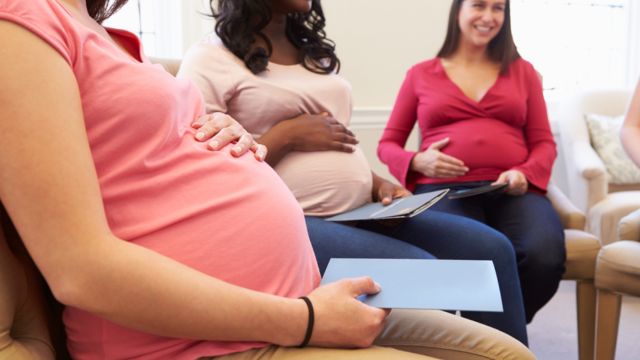Pregnant women are increasingly being forced to travel further distances to deliver their kids or to forego prenatal care altogether.
According to a March of Dimes research released on Tuesday, more than a third of U.S. counties (35.1%) are “maternity care deserts,” which means they lack a single doctor, nurse, midwife, or medical center that specializes in maternity care.
More than 2.3 million women of reproductive age lived in one of these counties in 2022, according to statistics collected for the new report, up from 2.2 million in 2020.
The number of newborns born in these counties has similarly increased, from 146,000 to more than 150,000.
“It’s getting worse over time,” said Ashley Stoneburner, main report author and head of applied research and analytics at the March of Dimes.
According to her, the data reflect an increase in hospital obstetric unit closures. According to the analysis, approximately one in every twenty-five hospital maternity wards will shut between 2021 and 2022.
“Hospitals are not making enough money, and it’s obstetric units that are oftentimes the units that get closed first,” according to Stoneburner. “We hear this every day.” The National Center for Health Statistics stated this month that the percentage of women who did not receive prenatal care increased by 5% between 2022 and 2023.
There is an additional indication that the Supreme Court’s 2022 overturning of Roe v. Wade is hastening the situation. According to a Commonwealth Fund analysis released in July, women living in states with severe abortion legislation are less likely to be able to find an OB-GYN. According to a previous survey, similar rules are pushing away obstetricians and gynecologists.
“There’s been a mass exodus,” stated Dr. Tracey Wilkinson, an associate professor of pediatrics at Indiana University School of Medicine. “The March of Dimes report is “terrifying,” she continued, “because it’s a warning of things becoming worse.”
The states with the highest percentage of maternity care deserts were in the Midwest and Southeast, which also had the tightest abortion legislation.
Arkansas, Missouri, Oklahoma, and the Dakotas are among the states where at least half, if not three-quarters, of counties lack access to obstetric care.
The current survey also discovered that women living in maternity care deserts have a 13% higher risk of preterm birth, which supports earlier research indicating that these locations have higher maternal and newborn mortality rates.
Alaska, Hawaii, and Montana were the states where pregnant women had to travel the farthest to receive medical maternity care.
“We’re used to traveling because Montana is a large state. “Everything is very diverse,” said Vania Biglefthand, 40, of Colstrip, Montana. “We don’t realize the hardship until something like this happens.”
Biglefthand’s water broke at 29 weeks into her third pregnancy in 2017.
She had no alternative but to get into her car and drive two hours to the nearest birthing hospital in Billings for assistance.
Her son was born healthy and is now six years old.
But Biglefthand recalls the long drive as stressful.
“You have to worry about gas money, animals on the road, road conditions if a storm hits,” she said, along with the most pressing question: “Am I going to make it to the hospital on time?”















+ There are no comments
Add yours